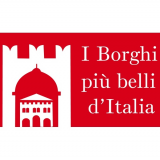
 I borghi più belli d'Italia
I borghi più belli d'Italia
Italian Little Italies: Tagliacozzo, The ancient capital of Marsica
- WTI Magazine #94 Aug 19, 2017
-

 I borghi più belli d'Italia
I borghi più belli d'Italia
On the northern slopes of the Simbruini mountains, not away from the border of Lazio, Tagliacozzo is an historical centre whose walls erected in 1410 counted five doors and whose defence was submitted to a castle, in total ruin today. The best interesting part is the one meeting over the Roman arc toward the inside.
Piazza Obelisco is one of the most harmonic squares of Abruzzo, it is the pulsating centre of the village since from when it was called Piazza da’Piedi. It is surrounded of elegant buildings, some restructured and others in deterioration. Other things to see is an attractive double lancet windows, an open gallery with arcs to all order and Renaissance windows. In the past it was surrounded by arcades, closed in 1810 ordered by Gioacchino Murat, king of Naples. To the centre he brought the “pilozzo”, a seat of stone for insolvent debtors who were exhibited to the public pillory, that was replaced around 1825 by the fountain with the obelisk.
The Ducal building, the pearl of the artistic patrimony of Tagliacozzo, goes back to the first half of the 14th century, while the second constructive phase is connected to the second half of the following century under the commander Earl Roberto Orsini, painted with his wife in the frescos of the room with the writing RUBERTUS COMES ET CAPITANEUS on the frieze of the door. Other changes were brought when the building passed from the Orsinis to the Colonnas: of both families we still have their symbols, but in the portal of entry and in the courtyard of honor, the coats of arms of the first ones were chiseled by the seconds.
Many elements testify the beauty of this building, such as: decorated windows , the double lancet windows, ornamental rooms, paintings, staircases and particularly the Cappellina in which splendid frescos of late-Gothic taste showing the life of Christ are still visible: the Nativity has similarities with the Benozzo Gozzoli of the Pinacoteca Vaticana (same subject, same abstract elegance).
There is no certitude of the passage of St. Francis to Tagliacozzo, even if in the Church and Convent of St. Francis there is the tomb of the first biographer of the poor man of Assisi, the Blessed Thomas from Celano (1190-1260). The Franciscan church, mentioned in a 1252 papal bull, is back to the death of the Saint, while the primitive construction named Saint Mary in Eloreto (that is “in a wood of laurel”) is already mentioned in 1115. It was contemporarily restructured in the beginning of 1600 together with the construction of the cloister, with stories of the life of St. Francis. It became Baroque in the 18th century with an evident detach in comparison to the past, it was closed from the Napoleonic edicts in 1809 and turned to town services.
The Church of Saints Cosma and Damiano is the most ancient and rich of memories, in despite of the thefts and the dispossessions of which it has been object during the times. It goes back to the 8thcentury and introduces a Romanesque style. It belonged to the Benedictines of Montecassino and it was reason of long arguments between the papacy and the bishop of the Marsis. For a century and a half, from 1230 to 1380, it preserved the right to bury their dead.
The name
The placename means, according to the researchers, “cut in the rock” - from the Latin talus (cut) and cotium (rock) - to indicate the fissure that divides the mountain, in which the urban installation has developed.
The product
The most representative food stuff are: home-made egg noodles, corn´s flour porridge (polenta), lamb and calf meat, the secular tradition of the workmanship of pork meat with sausages, ham, loin of pork, coppa, liver, salami, “guanciale” and bacon.
The production of sweets follows the festivities: at Christmas pizza with walnuts and full “nivoles”; at Carnival pancakes and “zeppoles” with honey chestnuts and “nocchietelle”; at Easter pizza and above all biscuits (little horses and doves) manufactured by the nuns of seclusion of the Benedictine monastery for the Feast of the Face Saint on Sunday in Albis.
And more biscuits with anise seeds, “mostaccioli” with chocolate, “baracchiglie” full of jam, macaroons with almonds, wine buns or with a topping of icing sugar.
The recipe
Gnocchetti with ceci, celebrated with a festival in the beginning of August; the (porridge) polenta with sausages and “spuntature” served in wood dishes (the scifellettes), which a festival is also devoted in the beginning of December; finally, the lamb with cheese and eggs for the deliciousness of the meat.